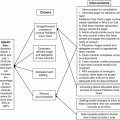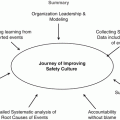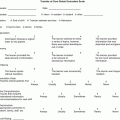© Springer International Publishing AG 2017
Christopher E. Dandoy, Joanne M. Hilden, Amy L. Billett and Brigitta U. Mueller (eds.)Patient Safety and Quality in Pediatric Hematology/Oncology and Stem Cell Transplantation10.1007/978-3-319-53790-0_2020. Quality Improvement and Patient Safety Resources
(1)
Department of Bone Marrow Transplant and Immune Deficiency, Cincinnati Children’s Hospital Medical Center, University of Cincinnati, Cincinnati, OH, USA
(2)
Center for Cancer and Blood Disorders, Children’s Hospital Colorado, University of Colorado School of Medicine, Aurora, CO, USA
(3)
Dana-Farber/Boston Children’s Cancer and Blood Disorders Center, Harvard Medical School, Boston, MA, USA
(4)
Johns Hopkins All Children’s Hospital, Johns Hopkins University School of Medicine, Baltimore, MD, USA
Keywords
Quality improvementPatient safetyOverview
Pediatric hematology/oncology/hematopoietic stem cell transplant patients are highly susceptible to preventable harm. They usually have central venous catheters exposing them to infectious or thrombotic complications, receive toxic medications, are highly susceptible to healthcare-acquired infection, and are at high risk of home medication errors and nonadherence. The Institute of Medicine defines patient safety as the prevention of harm to patients, and workers in healthcare delivery systems have an obligation to prevent harm through cultivation of a culture of safety that prevents errors and learns from the errors that do occur.
The goal of this chapter is to provide a useful reference of resources to assist individuals and organizations in its quality improvement and safety efforts. It provides a concise summary of selected patient safety and quality manuscripts and books.
Quality Improvement Resources
Books
Crossing the Quality Chasm: A New Health System for the 21st Century. 2001. 1st Edition. Institute of Medicine Committee on Quality of Health Care in America (Author).
A follow-up to the Institute of Medicine (IOM) patient safety report, To Err is Human: Building a Safer Health System, Crossing the Quality Chasm encourages and advocates for a redesign of the healthcare system.
The Improvement Guide: A Practical Approach to Enhancing Organizational Performance. 2009. 2nd Edition. Gerald J. Langley, Ronald D. Moen, Kevin M. Nolan, Thomas W. Nolan, Clifford L. Norman, and Lloyd P. Provost (Authors).
The Improvement Guide offers and integrated approach to process improvement with step-by-step instruction on the Model for Improvement. The book provides a practical set of examples and applications for the implementation and acceleration of improvement.
Quality Improvement Through Planned Experimentation. 2012. 3rd Edition. Ronald M. Moen, Thomas W. Nolan, Lloyd P. Provost (Authors).
This book discusses the principles and methodologies for planned experimentation to improve processes and systems. The book incorporates case studies sequentially to provide the reader the knowledge needed to test and implement improvement strategies.
A Lean Guide to Transforming Healthcare: How to Implement Lean Principles in Hospitals, Medical Offices, Clinics, and Other Healthcare Organizations. 2006. 1st Edition. Thomas Zidel (Author).
A Lean Guide to Transforming Healthcare provides a practical review of the concepts of Lean and Six Sigma.
Basics of Health Care Performance Improvement: A Lean Six Sigma Approach. 2011. 1st Edition. Donald Lighter (Author).
Basics of Health Care Performance Improvement provides an overview of the principles and procedures of Lean Six Sigma. In addition, the book provides in-depth information on planning and implementing a “Define-Measure-Analyze-Improve-Control” initiative to reduce errors and improve performance.
The Lean Six Sigma Pocket Toolbook: A Quick Reference Guide to 100 Tools for Improving Quality and Speed. 2004. 1st Edition. Michael L. George, John Maxey, David Rowlands and, Mark Price (Authors).
Through summaries and examples, the Lean Six Sigma Pocket Toolbook assists the reader to determine which quality improvement tool is best suited for specific purposes.
Lean Hospitals: Improving Quality, Patient Safety, and Employee Engagement. 2011. 2nd Edition. Mark Graban (Author).
Lean Hospitals: Improving Quality, Patient Safety, and Employee Engagement explains how to use the Lean philosophy and management system to improve safety, quality, access, and morale while reducing costs in healthcare delivery.
Lean Six Sigma for Hospitals: Simple Steps to Fast, Affordable, and Flawless Healthcare. 2011. 1st Edition. Jay Arthur.
The purpose of Lean Six Sigma for Hospitals is to provide simple steps to help hospitals get faster, better, and cheaper in 5 days.
Why Hospitals Should Fly: The Ultimate Flight Plan to Patient Safety and Quality Care.
2008. 1st Edition. John J. Nance (Author).
Written as a novel, touches upon all the tenets of quality and safety in hospitals.
Stay updated, free articles. Join our Telegram channel

Full access? Get Clinical Tree








